| Ambassador of the United States to the Kingdom of Norway | |
|---|---|
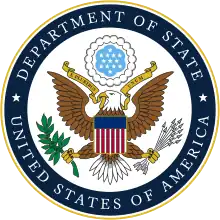 Seal of the United States Department of State | |
 | |
| U.S. Department of State Embassy of the United States, Oslo | |
| Style | His Excellency (formal) Mr. Ambassador (informal) |
| Reports to | U.S. Secretary of State |
| Residence | Villa Otium |
| Seat | Oslo, Norway |
| Nominator | The President of the United States |
| Appointer | with the advice and consent of the Senate |
| Term length | At the pleasure of the President No fixed term |
| Inaugural holder | Charles H. Graves as Envoy Extraordinary and Minister Plenipotentiary |
| Formation | March 8, 1905 |
| Website | U.S. Embassy - Oslo |
The United States ambassador to Norway (formally the ambassador of the United States to the Kingdom of Norway) is the official representative of the president and the government of the United States of America to the king and government of Norway.
Since the United States was recognized as an independent country in 1783, it first established diplomatic relations with Norway in 1818 when Jonathan Russell was accepted as the Minister Plenipotentiary to Sweden and Norway. From 1814 to 1905, Sweden and Norway were in a personal union. Although each country was fully sovereign, they had a common foreign policy and diplomatic service. The United States ambassador to Sweden thus was the U.S. representative to Norway as well as Sweden. In 1905 Sweden and Norway peacefully separated and Norway continued to be an independent constitutional monarchy. On November 14, 1905, the U.S. State Department instructed Ambassador Charles H. Graves to handle affairs for Sweden and Norway separately and the Ambassador was thus commissioned to Norway equally with Sweden, though he remained in Stockholm.
On June 22, 1906, Herbert H. D. Peirce was appointed to be the first ambassador of the U.S. appointed specifically solely for Norway. On August 6, 1906, the embassy in Stockholm ceased all functions related to Norway. Peirce presented his credentials to the foreign minister of Norway on August 13, 1906.
List of ambassadors


| Name | Portrait | Appointment | Presentation | Termination | Appointer | Notes | |
|---|---|---|---|---|---|---|---|
| Charles H. Graves |  |
March 8, 1905 | May 31, 1905 | August 6, 1906 | Theodore Roosevelt | Left post | |
| Herbert H. D. Peirce |  |
June 22, 1906 | August 13, 1906 | May 30, 1911 | Left post | ||
| Laurits S. Swenson |  |
April 27, 1911 | June 10, 1911 | October 4, 1913 | William H. Taft | Left post | |
| Albert G. Schmedeman |  |
July 21, 1913 | October 4, 1913 | July 29, 1921 | Woodrow Wilson | Left post | |
| Laurits S. Swenson |  |
October 8, 1921 | November 28, 1921 | November 9, 1930 | Warren G. Harding | Left post | |
| Hoffman Philip |  |
July 22, 1930 | November 15, 1930 | August 3, 1935 | Herbert Hoover | Left post | |
| Anthony J. Drexel Biddle, Jr. |  |
July 22, 1935 | September 7, 1935 | May 21, 1937 | Franklin D. Roosevelt | Left post | |
| Florence Jaffray Harriman | .jpg.webp) |
May 4, 1937 | July 1, 1937 | April 22, 1940 | Left Norway because of WWII, first female ambassador to Norway | ||
| Anthony J. Drexel Biddle, Jr. |  |
February 11, 1941 | March 20, 1941 | December 1, 1943 | Left London, where the government of Norway went into exile | ||
| Lithgow Osborne |  |
September 21, 1944 | December 20, 1944 | April 20, 1946 | Left post | ||
| Charles Ulrick Bay |  |
June 6, 1946 | July 26, 1946 | July 31, 1953 | Harry S. Truman | Left post | |
| Lester Corrin Strong |  |
June 24, 1953 | August 10, 1953 | February 16, 1957 | Dwight D. Eisenhower | Left post | |
| Frances E. Willis | 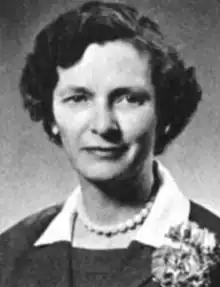 |
May 20, 1957 | June 19, 1957 | May 15, 1961 | Left post | ||
| Clifton R. Wharton, Sr. | 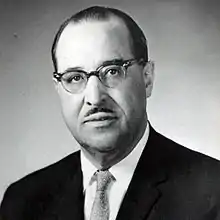 |
March 2, 1961 | April 18, 1961 | September 4, 1964 | John F. Kennedy | Left post | |
| Margaret Joy Tibbetts |  |
July 31, 1964 | October 6, 1964 | May 23, 1969 | Lyndon B. Johnson | Left post | |
| Philip K. Crowe |  |
May 1, 1969 | June 23, 1969 | August 31, 1973 | Richard Nixon | Left post | |
| Thomas Ryan Byrne | 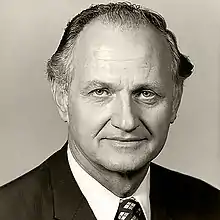 |
August 3, 1973 | October 4, 1973 | April 10, 1976 | Left post | ||
| William A. Anders | 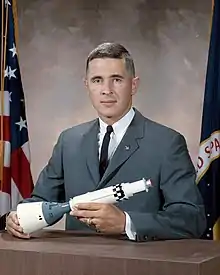 |
April 13, 1976 | May 11, 1976 | June 18, 1977 | Gerald R. Ford | Left post | |
| Louis A. Lerner |  |
July 15, 1977 | August 23, 1977 | January 28, 1980 | Jimmy Carter | Left post | |
| Sidney Anders Rand |  |
December 20, 1979 | March 4, 1980 | February 14, 1981 | Left post | ||
| Mark Evans Austad |  |
December 11, 1981 | January 5, 1982 | September 15, 1984 | Ronald Reagan | Left post | |
| R. Douglas Stuart Jr. |  |
September 18, 1984 | October 16, 1984 | July 17, 1989 | Left post | ||
| Loret Miller Ruppe |  |
August 7, 1989 | August 29, 1989 | February 28, 1993 | George H. W. Bush | Left post | |
| Thomas A. Loftus |  |
November 4, 1993 | November 18, 1993 | December 22, 1997 | Bill Clinton | Left post | |
| David Hermelin |  |
November 10, 1997 | January 8, 1998 | January 7, 2000 | Left post | ||
| Robin Chandler Duke |  |
August 3, 2000 | September 12, 2000 | March 1, 2001 | Left post | ||
| John D. Ong |  |
January 30, 2002 | February 27, 2002 | November 21, 2005 | George W. Bush | Left post | |
| Benson K. Whitney |  |
November 2, 2005 | January 12, 2006 | June 20, 2009 | Left post | ||
| Barry B. White |  |
September 23, 2009 | November 5, 2009 | September 28, 2013 | Barack Obama | Left post | |
| Samuel D. Heins | .jpg.webp) |
February 16, 2016 | March 10, 2016 | January 12, 2017 | Left post | ||
| Kenneth Braithwaite | .jpg.webp) |
December 21, 2017 | February 8, 2018 | May 29, 2020 | Donald Trump | Left post | |
| Marc Nathanson |  |
May 5, 2022 | June 16, 2022 | Joe Biden | |||
|
U.S. diplomatic terms |
|---|
|
Career FSO After 1915, The United States Department of State began classifying ambassadors as career Foreign Service Officers (FSOs) for those who have served in the Foreign Service for a specified amount of time. Political appointee A person who is not a career foreign service officer, but is appointed by the president (often as a reward to political friends). Appointed The date that the ambassador took the oath of office; also known as "commissioning". It follows confirmation of a presidential appointment by the Senate, or a Congressional recess appointment by the president. In the case of a recess appointment, the ambassador requires subsequent confirmation by the Senate to remain in office. Presented credentials The date that the ambassador presented his letter of credence to the head of state or appropriate authority of the receiving nation. At this time the ambassador officially becomes the representative of his country. This would normally occur a short time after the ambassador's arrival on station. The host nation may reject the ambassador by not receiving the ambassador's letter, but this occurs only rarely. Terminated mission Usually the date that the ambassador left the country. In some cases a letter of recall is presented, ending the ambassador's commission, either as a means of diplomatic protest or because the diplomat is being reassigned elsewhere and replaced by another envoy. Chargé d'affaires The person in charge of the business of the embassy when there is no ambassador commissioned to the host country. Ad interim Latin phrase meaning "for the time being", "in the meantime". |
Notes
- ↑ Ambassadors residence (Website of the embassy)